Mary Anne Yarde's Blog: The Coffee Pot Book Club , page 90
May 7, 2020
#HistoricalRomance author, Jayne Davis is taking a look at life in the times of English Landscape Gardening. There is also a chance to check of Jayne's fabulous #NewRelease A Suitable Match @jaynedavis142
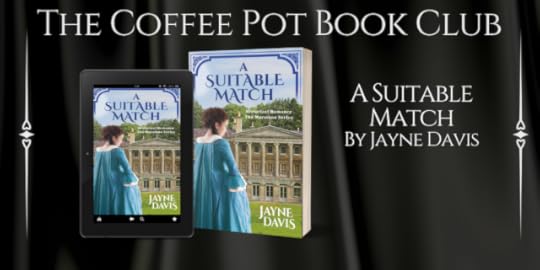
Life in the Times of English Landscape GardeningBy Jayne DavisIn the 18th Century, the formal style of garden for stately homes (described in my previous post here began to give way to a more natural style of gardening. Three men stand out in the transformation of the parks and gardens of the wealthy: William Kent, Lancelot ‘Capability’ Brown, and Humphrey Repton.
 Stoke Park, in Buckinghamshire, with the Repton Bridge.
Stoke Park, in Buckinghamshire, with the Repton Bridge.The landscape was designed by Capability Brown, and modified later by Repton. Although it has been altered further since then, not least by the addition of golf course, the water feature is obviously very different to the rectangular canals featured in earlier, formal designs.
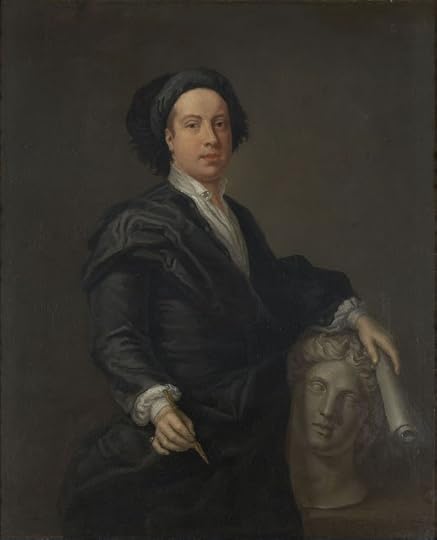 William Kent (1685-1748).
William Kent (1685-1748).Kent worked as a painter and architect as well as landscape designer. He introduced the Palladian style of architecture and also the ‘natural’ style of gardening that came to characterise English landscape gardens. Among his most famous projects were the gardens at Stowe in Buckinghamshire, Rousham House in Oxfordshire and Chiswick House in London. The gardens included various temples, cascades, bridges and other structures to allow visitors to tour picturesque scenes.
 The Temple of Ancient Virtue at Stowe.
The Temple of Ancient Virtue at Stowe. The cascades at Chiswick House.
The cascades at Chiswick House.More famous than Kent is Lancelot Brown (known as Capability Brown, because he used to tell clients their grounds had ‘capability’ for improvement).
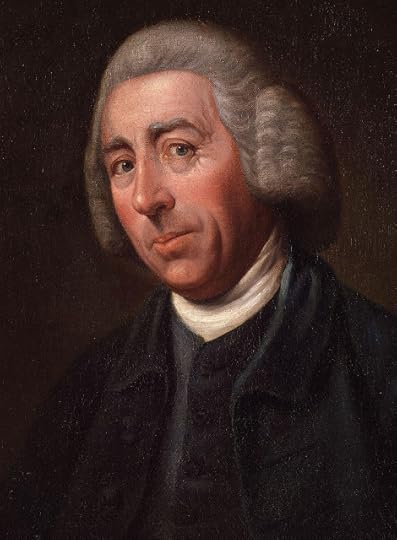 Capability Brown (1715-1783).
Capability Brown (1715-1783).Brown removed parterres and other formal, geometric structures and instead provided lawns and trees arranged to look naturalistic while providing good views. He also dammed streams to make lakes, and arranged canals to look like natural rivers. He designed 170 gardens, including those at Chatsworth and Blenheim Palace, and also acted as a contractor to implement his ideas.
 Capability Brown made the lake at Blenheim Palace by damming the small river that ran through the grounds.
Capability Brown made the lake at Blenheim Palace by damming the small river that ran through the grounds.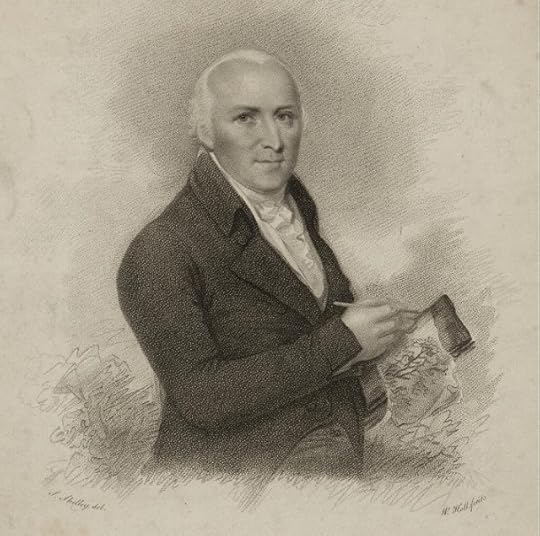 Humphrey Repton (1752-1818).
Humphrey Repton (1752-1818).Repton tried his hand at many careers, with little success. Eventually he decided to combine his skills with watercolour sketching with his experience in redesigning the grounds at a small country estate he’d once owned, to fill the gap left by the death of Capability Brown in 1783. Whereas Brown had designed parks and landscapes then organised and completed the work, Repton sold his ideas and rarely implemented them himself. Brown produced plans, but Repton was much more imaginative in showing potential clients how their grounds could look. He provided Red Books (so called because he had them bound in red) depicting the proposed scenes, with overlays (flaps that could be turned back) to show the scene in its current state.
Repton also rolled back Brown’s work to some extent, by reintroducing some formal gardens and terraces close to the house, to give it a more formal setting. He was also adept at ‘borrowing’ existing landscape features to enhance views, such as by cutting gaps through woodland to reveal the view of a distant church tower or hill.
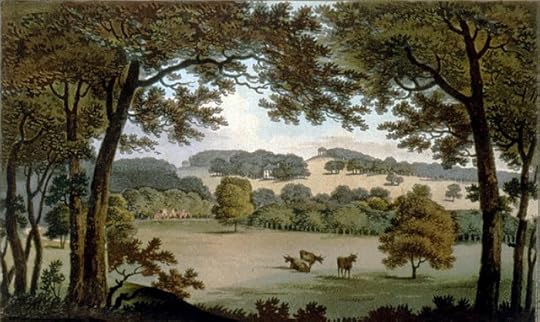 A Page from Repton’s Red Book for Wentworth, showing the existing landscape.
A Page from Repton’s Red Book for Wentworth, showing the existing landscape.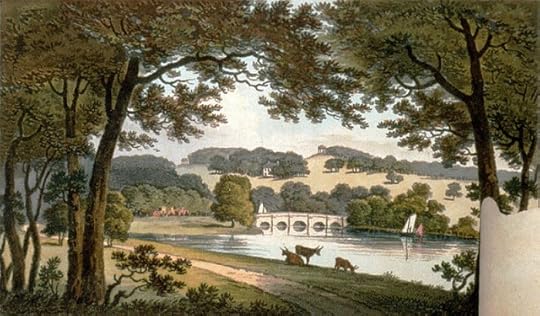 The same landscape with Repton’s proposed improvements. You can see on the right where a flap has been turned back.The same landscape with Repton’s proposed improvements. You can see on the right where a flap has been turned back.
The same landscape with Repton’s proposed improvements. You can see on the right where a flap has been turned back.The same landscape with Repton’s proposed improvements. You can see on the right where a flap has been turned back.There is a video here showing the Red Book for Sheringham Park:
A Suitable Match
Jayne’s latest book is just out! A Suitable Match is Book 2 in the Marstone Series, but each story can be read as a standalone novel with no cliffhangers.

England, 1782
Lady Isabella has been kept on a tight rein by Lord Marstone, her overbearing father. She's excited when he packs her off to London to make an advantageous match, confident her brother will preserve her from an unsuitable alliance. But when her brother is called away on vital business, he asks Nick Carterton to stand in for him.Nick, a scholar who relishes the quiet life, has avoided marriage for years but is finally giving in to his father’s request that he seek out a bride. Looking out for a young miss new to society is the last thing he'd choose to do.Will Nick’s attempts to help merely reinforce Isabella’s resentment at having her life arranged for her? Can Nick keep the headstrong Isabella out of trouble, put off unsuitable suitors, and still find himself a wife?
Pick up your copy ofA Suitable Match
Amazon UK • Amazon US
Jayne Davis
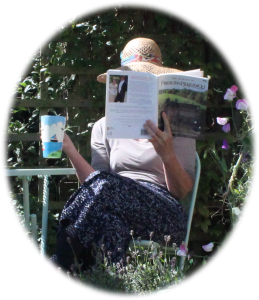 Jayne Davis writes historical romances set in the late Georgian/Regency era, published as both ebooks and paperbacks.
Jayne Davis writes historical romances set in the late Georgian/Regency era, published as both ebooks and paperbacks.She was hooked on Jane Austen and Georgette Heyer as a teenager, and longed to write similar novels herself. Real life intervened, and she had several careers, including as a non-fiction author under another name. That wasn't quite the writing career she had in mind...
Finally, she got around to polishing up stories written for her own amusement in long winter evenings, and became the kind of author she’d dreamed of in her teens. She is now working on the first few books in the Marstone Series, set in the late Georgian/early Regency period.
Connect with Jayne: Website • Facebook • Twitter • Pinterest • Goodreads.
Illustration creditsAll illustrations can be found on Wikimedia Commons.
Published on May 07, 2020 21:00
#BookReview — Forty Years In A Day by Mona Rodriguez and Dianne Vigorito. #HistoricalFiction #America

Forty Years In A DayBy Mona Rodriguez and Dianne Vigorito
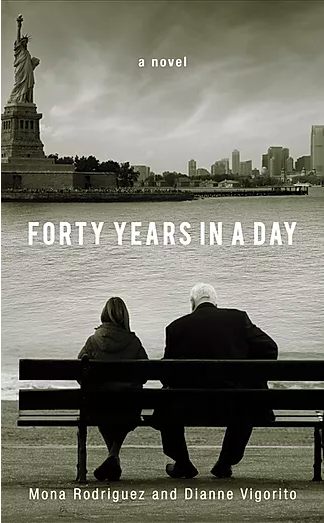
Confession is good for the soul even after the soul has been claimed...
The story begins in Italy, 1900. After years of torment and neglect, Victoria and her four small children immigrate to Hell's Kitchen, New York, to escape her alcoholic, abusive husband. On the day they leave, he tragically dies, but she does not learn of his death for several years—a secret that puts many lives on hold.
Quickly, they realize America's streets are not paved with gold, and the limits of human faith and stamina are tested time and time again. Poverty, illness, death, kidnapping, and the reign of organized crime are just some of the crosses they bear.
Victoria's eldest son, Vincenzo, is the sole surviving member of the family and shares a gut-wrenching account of their lives with his daughter during a visit to Ellis Island on his ninetieth birthday. He explains how the lives of he and his siblings have been secretly intertwined with an infamous Irish mob boss and ends his unsettling disclosure with a monumental request that leaves Clare speechless.
Forty Years in a Day is layered with the struggles and successes of each family member and defines the character of an era. Follow the Montanaro family through several decades, and stand in the shoes of a past generation.
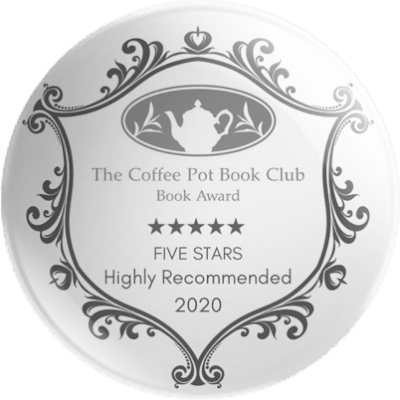
“Clare, every day you’re alive is a beautiful day…”
Clare had grown up hearing that, but she had never really understood the meaning behind the words until she found herself sat on a bench with her ninety-year-old father. It was then that she dared to ask him a question — one that she feared he would not be able to answer because memories fade, as memories do. Clare asked him to tell her the story of his life.
Vincenzo Montanaro may well be old, but he remembers everything. Every detail. But his story did not start with his birth. His destiny was tied with that of his mother’s and his brothers and sisters. It was a story of those who he had loved and those he had lost. It was a story of a dream that at times had turned into a nightmare. It was the story of a new beginning, a desperate hope. Vincenzo Montanaro's life had been both a blessing and a curse.
From a terrible confession to the desperation of a man torn between his lover and the woman he still loved, Forty Years In A Day by Mona Rodriguez and Dianne Vigorito is the story of one family as they reached for that all illusive American Dream.
With a sprawling stirring narrative and almost lyrical prose, not to mention a plot twist that I most definitely did not see coming, Forty Years In A Day is one of those books that grabs your attention from the very beginning and takes you on a beautiful voyage of discovery. This novel is simply unputdownable. It is enthralling, beguiling and utterly engrossing. When Historical Fiction is written in such a way, then there is no such thing as too much.
There is a vast cast of characters in this book. Rodriguez and Vigorito give their readers insight into not only Vincenzo's perspective but also many of the secondary characters as well. This is an approach that carries a great deal of risk, for a reader can easily become confused, but in the case of this book, it added a richness to the story that would have been terribly difficult to obtain from a single viewpoint. It also gives the reader an intimacy towards the characters and the situations they find themselves in. The natural rhythm to this tale meant that not once did I feel bewildered as to who was talking and what part they played in this dramatic family drama.
There are so many characters in this story, but one of my favourite characters has to be Vincenzo “Vinny”. Vinny forms a friendship on the boat as they crossed the Atlantic Ocean, and it was a friendship that would endure for the rest of his life. Vinny and Tony grew up together and then later became business partners. They are kindred spirits who both embraced the idea of the American Dream, but instead of waiting for it to fall onto their laps as many did, they set out to find it and make the dream their own. Even from a young age, these two endearing boys are determined to make some money for their poverty-stricken families. Their determination to start at the very bottom and work their way to the top sets them apart. Vinny and Tony’s dogged determination never to give up made them incredibly appealing characters. Of course, this story is not just about Vinny’s successful business ventures, but it is also about the man himself, one who knows what he wants but occasionally stumbles along the way. Vinny’s character was very authentic in the telling, and of all the characters in this novel, Vinny is the one I adored the most.
Santo Carnavale, Vinny’s half-brother, was another character that fascinated me. Santo is a child who was born in an era where neurodevelopment disorders were not understood. Santo is quite a destructive child who finds ingenious ways to get out of school. There is an incident with a toilet that is incredibly amusing. However, this incident shows this young boy’s intelligence — he would have made a good engineer! Santo is a character whom I thought was wonderfully portrayed. His depiction was candid in the telling, but it was also sobering for what chance did he have in a world that was not equipped to deal with the health issues that he had? Santo’s escalating spiral of decline when he reaches adulthood was incredibly hard to witness, but it did bring a lot to this story, and it demonstrated how different children, who had exactly the same upbringing, could be.
Like Santo, Louise is a character who struggles with her mental health with devastating and unforeseen consequences. Louise came across as very confident and boisterous. She is one of those people who light up a room just by entering it. But underneath this bubbly personality is a young woman who is, in fact, terribly insecure. I thought Louise’s depiction was fabulous.
There are scenes in this novel that are terribly distressing — from incidents of domestic violence, deaths, and the brutalities of the mob. At times there is an essence of Mario Puzo’s The Godfather about this novel, but I think that is what makes it such an exceptional read. It is an incredible journey that Rodriguez and Vigorito take their readers on.
Rodriguez and Vigorito’s attention to the historical detail has to be commended. The hours of research that must have gone into this book is staggering. They have captured the very essence of the 1900s in both Italy and America. Rodriguez and Vigorito’s depiction of the desperate disappointment of the immigrants as they stepped off the boat and realised that the American Dream was just as it said, a dream. The streets were not paved with gold. Instead, they were paved with disease, despair and poverty. This is a story that spans two generations and, through the eyes of this remarkable family, we watch as history is made. The roaring 20s was particularly well depicted, especially the speakeasies. The despair of The Wall Street Crash was also exceptionally well-drawn. This is a tale of a family who endured hardship and suffering, but it is also one of boundless hope and love. Rodriguez and Vigorito have penned a book that is a work of exceptional scholarship and one that could so easily be adapted for the small screen. This is a story that is as mesmerising as it is detailed. In all ways, Forty Years In A Day is a Historical Fiction triumph!
Forty Years In A Day by Mona Rodriguez and Dianne Vigorito is a poignant voyage of discovery and one that mesmerised me from the opening sentence to the final full stop. This is a book that really had it all — it is an honest and painfully truthful depiction of one family as they navigate a forever changing world. This book is definitely worthy of a place on your bookshelf, but more importantly, your heart. I could read this book over and over again and never tire of it. It is, in all ways, a real gem.
I Highly Recommend.
Review by Mary Anne Yarde. The Coffee Pot Book Club.
Pick up your copy of Forty Years In A Day Amazon UK • Amazon US
Mona Rodriguez and Dianne Vigorito (1959 - 2015)
 Mona Rodriguez.Mona Rodriguez and Dianne Vigorito are cousins. Throughout their lives, they had heard many stories from family members that were fascinating, sometimes even unbelievable, and decided to piece together the puzzle of tales. Through research and interviews, their goal was to create a fictional story that follows a family through several decades, providing the reader an opportunity to stand in the shoes of a past generation and walk in search of their hopes and dreams. What they realize in the process is that human emotions have been the same throughout generations - the difference is how people are molded and maneuvered by the times and their situations.
Mona Rodriguez.Mona Rodriguez and Dianne Vigorito are cousins. Throughout their lives, they had heard many stories from family members that were fascinating, sometimes even unbelievable, and decided to piece together the puzzle of tales. Through research and interviews, their goal was to create a fictional story that follows a family through several decades, providing the reader an opportunity to stand in the shoes of a past generation and walk in search of their hopes and dreams. What they realize in the process is that human emotions have been the same throughout generations - the difference is how people are molded and maneuvered by the times and their situations.Mona and Dianne strongly believe there is tremendous knowledge to be gained from those who are older and wiser, a resource precariously looming at everyone's fingertips.
Connect with Mona: Website • Amazon Author Page • Goodreads.
Published on May 07, 2020 20:00
May 6, 2020
Have you heard? Eleni Cay's fabulous #NewRelease — The Love Virus — is #FREE on Kindle #YoungAdult #MultipleSclerosis @EleniCay

The Love VirusBy Eleni Cay

When Katie finds out that her increasingly unresponsive legs and extreme fatigue is due to Multiple Sclerosis, she rides an emotional rollercoaster – anger, denial and fear – when faced with a wheelchair-bound existence. She puts her studies at Oxford on hold, and she splits up from her fiancé, Mark, even though she still loves him. While undergoing treatment, Katie is diagnosed with MS2 – a virus that paralyses the mind. In hospital, Katie has to cope with her irritating bedfellows who argue constantly, and where she is treated by Dr Andrews, a handsome psychologist. The closer she gets to him however, the worse her pain becomes. Compounding Katie’s struggle is Mark, who returns to her bedside day after day. Once Katie begins Dr Andrews’ new experimental MS2 treatment, Mark can’t recognise her anymore. He begins to wonder if Katie will ever be cured.
Excerpt
I remembered how dad took me toa jazz club once. He liked blue notesand he liked this song.He couldn’t stand mum’s cheesy pop.Too smooth for him.He liked the dissonance.Not jarred jazz, but a blue notehere and there,that can bring the whole songto another level.Perhaps this wholeMultiple Sclerosis thingwas one of those blue notes.It added some novelty to the ordinary,some new vocabulary we all had to learn,something new for friends to Facebookand to Tweet about.Some modifications to my diet,to my personalised Google ads.Some changes to my thinking,to my love life …
Pick up your FREE Ebook copy ofThe Love VirusAmazon UK • Amazon US • Kobo • Barnes and Noble • Apple Books
Eleni Cay
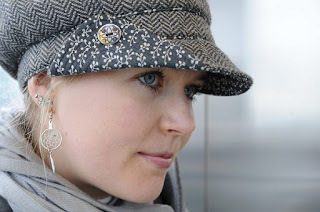 Eleni Cay is a Slovakian-born poet living in Norway. Her award-winning first collection was published by Parthian Books and her second poetry collection ‘Love Algorithm’ is forthcoming by Eyewear Press. Eleni’s debut novel ‘The Love Virus’ was published in spring 2020.
Eleni Cay is a Slovakian-born poet living in Norway. Her award-winning first collection was published by Parthian Books and her second poetry collection ‘Love Algorithm’ is forthcoming by Eyewear Press. Eleni’s debut novel ‘The Love Virus’ was published in spring 2020.Bonus material with accompanying poems and videopoems are available from my website.Connect with Eleni: Website • Facebook • Instagram • Twitter.
Published on May 06, 2020 22:00
Let’s have a sneak peek between the covers of The Road to Liberation: Trials and Triumphs of WWII (A Collection) #HistoricalFiction #WW2 #BlogTour @JJToner_ya @MarionKummerow @marosikok

The Aftermath
By Ellie Midwood
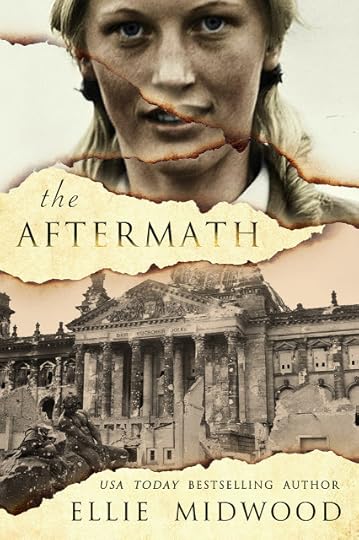
Let’s have a sneak peek between the covers of The Road to Liberation. Below is an excerpt of Ellie Midwoods’s fabulous book — The Aftermath.
Excerpt
03:00 Berlin time. All at once, the deceivingly quiet front came alive with thousands of mortars and Katyushas. All around him, the earth trembled as the terrible thunder rolled forward like thousands of Jericho’s trumpets announcing the end of the world, no less. Tadek plugged his ears and opened his mouth to relieve the pressure on his eardrums. He almost pitied the artillerists manning those monstrosities behind him; he was certain they would all go deaf by the end of this bombardment. Of the Germans, who found themselves on the receiving end of this infernal assault, he didn’t even wish to think. Hardly anyone would survive such total obliteration that the 1st Belorussian Front’s commander Zhukov unleashed on their defense lines.
Just when Tadek had thought that the nightmare would never end, the guns had grown suddenly quiet. Through the ringing in his ears, he could still discern the frantic cawing of the birds flying in chaotic circles overhead, terrified out of their wits by not only the bombardment but by thousands of colorful flares that shot up into the sky at once – the signal for the main attack. They hung there for a few seconds like glowing, exotic jellyfish and all at once, it was suddenly daylight all around him, blinding and disorienting. The troops had been warned ahead of time of Zhukov’s recently conceived tactic of installing almost a hundred and fifty powerful searchlights trained on the German positions to stun them and render them defenseless. But even to the Soviet troops, the light had turned out to be so overpowering that it was impossible to look anywhere but straight ahead – ahead and ahead only, across the former no-man’s-land – to Berlin. The light urged them forward, toward the fountains of earth exploding in rapid succession, toward the smokescreen created by the exploded shells that had obscured everything from their sight, toward the trenches, where the torn bodies of their enemies now lay. There was no turning back now. Not a chance for desertion, not in this hellish madness. Perhaps, that was another part of Zhukov’s plan.
Not a single step back.
“Na Berlin!” – To Berlin! – A veritable roar of the charging infantry echoed all around him. And Tadek ran along with them, propelled forward by some inexplicable spirit of destructive delight, mad with a sudden fury and drunk with the desire for revenge.
On the border of Germany proper, next to the disabled carcasses of Wehrmacht vehicles, the very first troops that had crossed it installed a sign: “Here it is, accursed Germany.” The same hatred that they carried in themselves for this country, Tadek felt coursing in his own veins now. On his chest, a medal for courage was gleaming dimly in the smoke-stained morning. He shot and stabbed his way to Berlin along with the troops; first with Konev’s First Ukrainian Front, then with Zhukov’s First Belorussian but the further he went, the worse the withdrawal from such battles was growing. Almost like a hangover after a bad night of drinking, only there was no escaping the nauseating realization that the more lives he took, in revenge for what had been taken from him, the bigger the hole inside of him was growing, sucking the very life out of him with every new battle won.
With tanks rumbling on their heels, they finally reached the German positions. The very few men that had the luck to survive the initial onslaught, stumbled toward them in a dazed state; shouted, in their hoarse voices, the same phrase in their pidgin-Russian – Ivan, don’t shoot, we are prisoners – and nearly fell in a heap at their feet in relief, pushing the safe passage leaflets instead of the white handkerchiefs into the Russians’ hands.
“The white handkerchiefs had been all confiscated before the battle,” one of the Wehrmacht infantrymen explained to a hawk-eyed commissar who conducted the usual interrogation. “By the Feldgendarmerie… to prevent surrender…”
But knowing what was good for them and that all was lost at any rate and that it would have been rather idiotic to die right before the end of this entire affair, the resourceful Wehrmacht landser had still squirreled away a few leaflets, dropped before the battle, by the 7th Department of Propaganda, attached to the First Belorussian and hid them inside their uniforms. Starved, filthy, unshaven, the Germans held those papers in front of themselves now and searched the Russians’ faces, with their wary, mistrustful eyes, desperately hoping for mercy and not really expecting it, at the same time.
“The only promise Hitler has kept is the one he made before coming to power,” one of the newly-surrendered men uttered with a lopsided grin, as he was being patted down for hidden weapons. “Give me ten years and you will not be able to recognize Germany. What do you know? The old sod did not lie.”
Files and files of the POWs began trudging toward the rear of the frontline, where the NKVD detachment awaited them with open arms. Many of the Germans were mere boys, with legs fully covered by much-too-long trench-coats and with helmets sitting so low on their tense faces, gray with fatigue, that they obscured their sight. Some still tried shooting, prior to their foxholes being overrun but dropped their weapons as soon as the Ivans came close; screamed the inevitable and already-familiar, “Hitler kaputt, Stalin gut!” and scrunched up their little, pitiful faces, expecting a beating. The Soviets ordinarily dealt them a kick in the backside and sent them over to the rear, trembling and harmless. For them, the war was finally over. Tadek was amazed at how relieved they all looked, his former enemies.
The Road to Liberation: Trials and Triumphs of WWIIA CollectionBy Marion Kummerow, Marina Osipova, Rachel Wesson, JJ Toner, Ellie Midwood, and Chrystyna Lucyk-Berger.
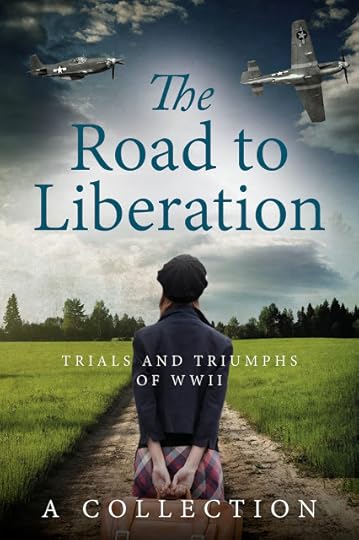
Riveting stories dedicated to celebrating the end of WWII.From USA Today, international bestselling and award-winning authors comes a collection filled with courage, betrayal, hardships and, ultimately, victory over some of the most oppressive rulers the world has ever encountered.By 1944, the Axis powers are fiercely holding on to their quickly shrinking territories.The stakes are high—on both sides:Liberators and oppressors face off in the final battles between good and evil. Only personal bravery and self-sacrifice will tip the scales when the world needs it most.Read about a small child finding unexpected friends amidst the cruelty of the concentration camps, an Auschwitz survivor working to capture a senior member of the SS, the revolt of a domestic servant hunted by the enemy, a young Jewish girl in a desperate plan to escape the Gestapo, the chaos that confused underground resistance fighters in the Soviet Union, and the difficult lives of a British family made up of displaced children..2020 marks 75 years since the world celebrated the end of WWII. These books will transport you across countries and continents during the final days, revealing the high price of freedom—and why it is still so necessary to “never forget”.
Stolen Childhood by Marion KummerowThe Aftermath by Ellie MidwoodWhen's Mummy coming? by Rachel WessonToo Many Wolves in the Local Woods by Marina OsipovaLiberation Berlin by JJ TonerMagda’s Mark by Chrystyna Lucyk-Berger
Pick up your copy ofThe Road to LiberationAmazon US • Amazon UK • Amazon CA
JJ Toner

My background is in Mathematics and computing, but I have been writing full time since 2005. I write short stories and novels. My novels include the bestselling WW2 spy story 'The Black Orchestra', and its three sequels, 'The Wings of the Eagle', 'A Postcard from Hamburg', and 'The Gingerbread Spy'.Many of my short stories have been published in mainstream magazines. Check out 'EGGS and Other Stories' - a collection of satirical SF stories. I was born in a cabbage patch in Ireland, and I still live here with my first wife, although a significant part of our extended family lives in Australia.
Marina Osipova

Marina Osipova was born in East Germany into a military family and grew up in Russia where she graduated from the Moscow State Institute of History and Archives. She also has a diploma as a German language translator from the Moscow State Institute of Foreign Languages. In Russia, she worked first in a scientific-technical institute as a translator then in a Government Ministry in the office of international relations, later for some Austrian firms. For seventeen years, she lived in the United States where she worked in a law firm. Eventually, she found her home in Austria. She is an award-winning author and a member of the Historical Novel Society.
Marion Kummerow

Marion Kummerow was born and raised in Germany, before she set out to "discover the world" and lived in various countries. In 1999 she returned to Germany and settled down in Munich where she's now living with her family.
After dipping her toes with non-fiction books, she finally tackled the project dear to her heart. UNRELENTING is the story about her grandparents, who belonged to the German resistance and fought against the Nazi regime. It's a book about resilience, love and the courage to stand up and do the right thing.
Rachel Wesson

Rachel Wesson is Irish born and bred. Drawn to reading from an early age, she started writing for publication a few years back. When she is not writing, Rachel likes to spend her time reading and playing with her three kids. Living in Dublin there are plenty of things to do, although the cowboys and Indians of her books rarely make an appearance. To chat with Rachel connect with her on Facebook - authorrachelwesson. To check out her newest releases sign up to her mailing list.
Ellie Midwood

Ellie Midwood is a USA Today bestselling and award-winning historical fiction author. She owes her interest in the history of the Second World War to her grandfather, Junior Sergeant in the 2nd Guards Tank Army of the First Belorussian Front, who began telling her about his experiences on the frontline when she was a young girl. Growing up, her interest in history only deepened and transformed from reading about the war to writing about it. After obtaining her BA in Linguistics, Ellie decided to make writing her full-time career and began working on her first full-length historical novel, "The Girl from Berlin." Ellie is continuously enriching her library with new research material and feeds her passion for WWII and Holocaust history by collecting rare memorabilia and documents.
In her free time, Ellie is a health-obsessed yoga enthusiast, neat freak, adventurer, Nazi Germany history expert, polyglot, philosopher, a proud Jew, and a doggie mama. Ellie lives in New York with her fiancé and their Chihuahua named Shark Bait.
Chrystyna Lucyk-Berger

Chrystyna Lucyk-Berger was born in Minnesota in 1969 and grew up in the culture-rich neighborhood of "Nordeast" Minneapolis. She started her writing career with short stories, travel narratives, worked as a journalist and then as a managing editor for a magazine publisher before jumping the editor's desk and pursuing her dreams of writing and traveling. In 2000, she moved to western Austria and established her own communications training company. In 2005, she self-published a historical narrative based on her relatives' personal histories and experiences in Ukraine during WWII. She has won several awards for her short stories and now primarily writes historical fiction. During a trip into northern Italy over the Reschen Pass, she stood on the edge of Reschen Lake and desperately wanted to understand how a 15th-century church tower ends up sticking out of the water. What stories were lying beneath? Some eight years later, she launched the "Reschen Valley" series with five books and a novella releasing between 2018 and 2021.For more on Chrystyna, dive in at inktreks(dot)com.
Published on May 06, 2020 21:30
Join #HistoricalFiction author, Sharon Bradshaw, as she takes a look at Storytelling... From The Dark Ages #DarkAges @sharonbradshaw0
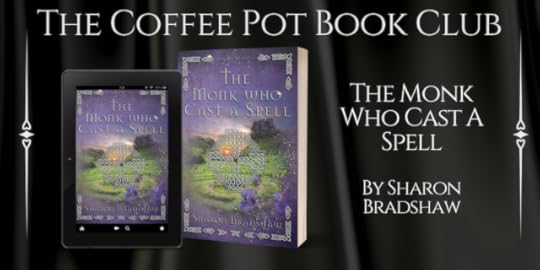
Storytelling... From The Dark AgesBy Sharon Bradshaw
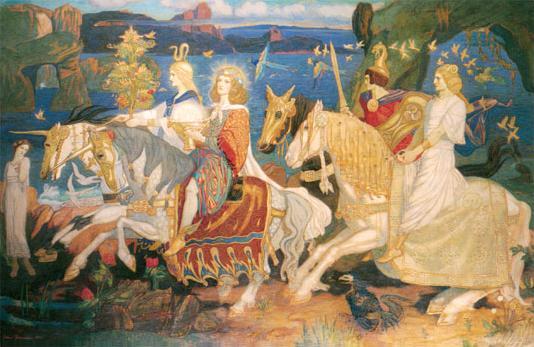 Riders of the Sidhe.
Riders of the Sidhe.Once Upon A Time
Many of our Faery tales are based on a much darker past, than the revised versions which appeared in the 19th century would have us believe. Those from the pens of writers like the Brothers Grimm, and Hans Christian Andersen. Rapunzel and Cinderella, with their once upon a time and happy ever after endings, are rooted at least as far back as the pre-Christian Dark Ages or early Medieval period. From the date when the Romans left the British Isles circa 410AD, to the Norman Conquest of 1066AD. A good tale gains validity and power when it becomes part of folk memory, passed down across the centuries. To entertain, teach, and inspire later generations. As in the above painting, Riders of the Sidhe by John Duncan (1866 - 1945), which is a lovely evocation of the Fae.
Faeries can be found in the beliefs of the Dark Ages. When the Church was still trying to gain a stronger foothold in the British Isles. Paganism existed initially alongside its teachings, until there were sufficient conversions to the new religion for the old ways to be discouraged. Celebration of the seasons and natural wheel of the year, upon which life itself depended, and the otherworld where all would travel when they passed from here. The Faeries were there too, whilst the Tuatha De Danaan are still with us today in the retelling of their story. The Faery procession, or Old Gods and Goddesses, which ride out from the hollow hills of Ireland.
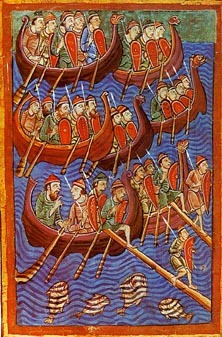 Vikings.
Vikings.All Grist for the Storyteller's Mill
Ornately carved weapons, jewellery, and beautiful manuscripts were made by skilled hands in the early Medieval period. If you think of Tolkien's Lord of the Rings you won't wander far from the truth, of the magical world it was then. People believed in the existence of Dragons, Wyrms that lived beneath the earth, and Gods and Goddesses who were capable of fantastic feats. All grist for the mill of Storyteller, Bard, and Scop! Also Beowulf, which may well have had its origins in the 7th century halls, and before. When a good tale would have been appreciated, on a long winter night.
A different slant was given to the old tales, by the Romantic movement of artists in the 1800s. Pre-Raphaelites like Dante Gabriel Rossetti (1828 -1882), Edward Burne-Jones (1833 - 1898), and others. The Druids also experienced a significant revival at this time. The little we know about them from the Greeks who had travelled through Celtic lands in the late Iron Age. Books too, written by Romans, such as Julius Caesar and Tacitus. Giving us the white robed figures who wander hill and dale, as magicians or wizards, and had returned to cut the mistletoe at Yule with a sickle knife.
 The Last Sleep of Arthur.
The Last Sleep of Arthur.The Quest for Arthur
The above painting is The Last Sleep of Arthur, by Edward Burne-Jones. Arthur can also be traced back to the Dark Ages. A real man, or figment of a much earlier imagination? We may never know the truth, but there is a convincing argument that he was a Pictish Aetheling, and 6th century contemporary of Saint Columba. Whilst other historians believe that he may have had his roots in Wales, and the Mabinogion tales, or possibly a myriad of other places. It's left now for us to decide, and enjoy the version of his story we prefer. Just like many Faery stories they are written with a sprinkling of magic, and enchantment.
I was inspired as a child, to learn that Arthur would return if we were in dire need of help. Only to discover later that this part of the legend came from the quill of Chretien de Troyes. The 12th century French poet who was one of the first writers to give Lancelot a prominent part in Arthur's story, and whose sources remain unclear. Did this possibly come from a much earlier account which had survived? Many believe that legend contains a grain of truth. Perhaps it was Christ's resurrection instead that was woven into Chretien's poem? Or was it only a tale from the past?
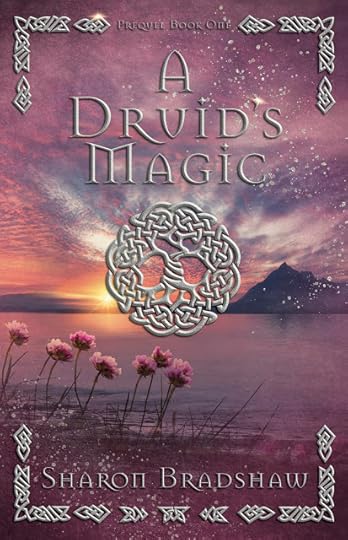 A Druid's Magic.
A Druid's Magic.My Storytelling and Books
When I wrote a novel about a Monk in 794AD, I realised that Durstan would have been much closer to Arthur's world than we are today. That the tales he listened to in the Lord's Hall on Mull would have been different, and one or two might well have been about Arthur. Especially if he was the 6th century Pictish Aetheling, Artuir Mac Aedan, as I like to believe. It is thought that he was buried on Iona where a large part of Durstan's story takes place. Therein lies the magic of storytelling, faery tales, and legend. They can connect us to our past, people, and places.
Since my last post for The Coffee Pot Book Club I have been researching the history behind many of our old tales. So that I could write, The Woodcutter And The Faery Queen. My new book, coming soon!
In the meantime The Monk Who Cast A Spell, the first novel in my Durstan series, is available now on Amazon. Also its prequel, A Druid's Magic, in which you can find out more about storytelling... from the Dark Ages.
The Monk Who Cast A SpellBy Sharon Bradshaw
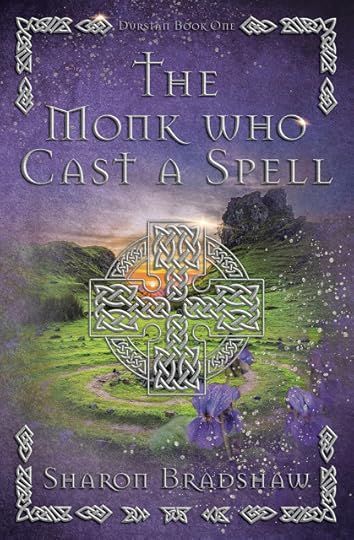
Durstan, a young Monk, falls in love with Ailan in 794AD. She disappears after their sexual awakening at Beltane. He is shocked and confused when he meets her again, several months later. Beth believes that she can obtain the protection of the Christian Church by manipulating Durstan’s emotions, and he is drawn to her.Their story unfolds against the beautiful scenery of Scotland’s Hebridean islands. People cross the sea in coracles from Iona to Mull. They walk through ancient forest to Lord Duncan’s Hall inside its timber enclosure. The seasons change from Spring to mid-Winter when the Old Gods are in the magic of the firelight, and the shadows at Yule.The early Christian Church continues to be challenged by tradition, and the Druids. Charms, amulets, and spells are prevalent. Life at the monastery is harsh, and Durstan is involved in the Viking raids. He doubts his religious beliefs in a society which is dominated by fear of violence, being outcast, or enslaved. Men and women in the 8th century are seeking protection from the most powerful God; Lord, or Abbot.And Durstan’s quest? To regain Ailan’s love.
Pick up your copy ofThe Monk Who Cast A SpellAmazon
Sharon Bradshaw
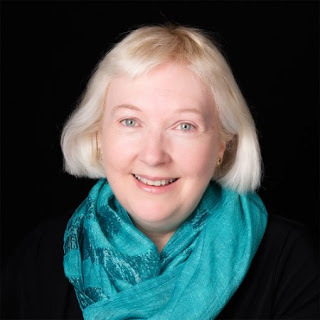 Sharon Bradshaw is a Historical Fiction Author, Storyteller, and Poet. She loves reading archaeology books, and delving into the 8th century to write the Durstan series. The Monk Who Cast a Spell, available now on Amazon is set in the real Middle Earth we called the Dark Ages.
Sharon Bradshaw is a Historical Fiction Author, Storyteller, and Poet. She loves reading archaeology books, and delving into the 8th century to write the Durstan series. The Monk Who Cast a Spell, available now on Amazon is set in the real Middle Earth we called the Dark Ages.Subscribers to The Storyteller’s Newsletter will receive free short stories from her, and updates on her Author news.
Sharon also enjoys speaking about her novels, and how all this came about. She lives with her family and a large collection of books, near Warwick Castle, in the UK.
Please visit her Website for more information, and follow her on Facebook and Twitter.
Published on May 06, 2020 21:00
#BookReview — People Like Us by Louise Fein #HistoricalFiction #WWII @FeinLouise
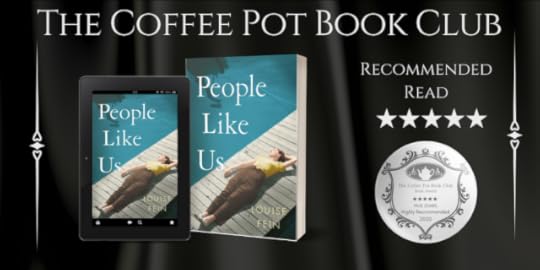
People Like UsBy Louise Fein
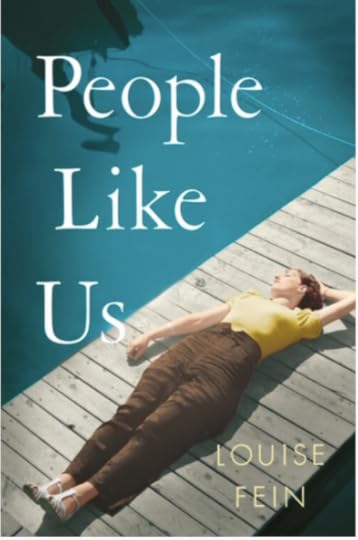
Leipzig, 1930s Germany.Hetty Heinrich is a perfect German child. Her father is an SS officer, her brother in the Luftwaffe, herself a member of the BDM. She believes resolutely in her country, and the man who runs it.Until Walter changes everything. Blond-haired, blue-eyed, perfect in every way Walter. The boy who saved her life. A Jew.Anti-semitism is growing by the day, and neighbours, friends and family members are turning on one another. As Hetty falls deeper in love with a man who is against all she has been taught, she begins to fight against her country, her family and herself. Hetty will have to risk everything to save Walter, even if it means sacrificing herself...
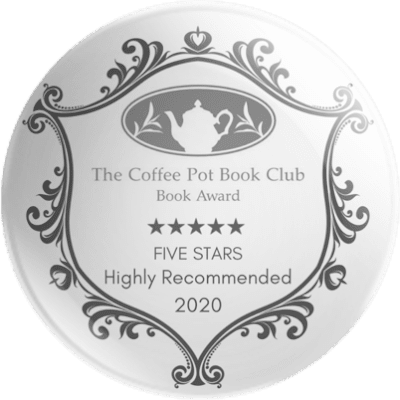
“These are difficult times. That’s why Vati does all this work for the SS as well as running the newspaper. They must protect Hitler and ban all the parties that seek to oppose him. Pick your friends carefully, Hetty. Stick only with good Germans, like us. Do you understand?”
Hetty Heinrich does understand. After all, Hitler lives inside her skull, telling her what she should and should not do. She would never disappoint him by mixing with bad Germans.
However, when her childhood hero, Walter, is made an example of in front of the whole school because he is a Jew, Hetty feels a moment of rebellion. He is her friend. He will always be her friend.
With Walter now firmly banished from their lives, Hetty becomes indoctrinated with Nazi ideology, but she still cannot forget that blonde-haired, blue-eyed boy from her childhood.
A chance meeting with Walter, several years later, leaves Hetty questioning everything she thought she knew. Now she faces the greatest battle of her life. To save a life, she must silence Hitler’s voice in her head once and for all...
From a near fateful drowning to a reunion that was decades in the making, People Like Us by Louise Fein is the heartbreakingly enthralling story of one young woman who dared to stand up to the Nazi regime to save the life of the man she loved.
People Like Us is an emotionally charged story that gripped me from the opening sentence and held my attention to the last full stop. With a rich and realistic historical backdrop, Fein has presented her readers with a tale that is not only unputdownable but one that is unforgettable.
We first meet Hetty when she is an adorable seven-year-old child who has a severe case of hero-worship towards her brother’s best friend. We watch as she grows up into a young teen who idolises Hitler, and like many others during this time, Hetty subconsciously seeks out potential enemies of the Reich. This, however, changes when she is reunited with Walter. Despite what she has been told about the filthy Jews, Hetty cannot bring herself to think that way about Walter. With Walter’s gentle yet honest explanations, Hetty’s eyes are opened and what she sees shakes the very foundations of her life and belief. Hetty is a very conflicted protagonist who, when she realises that she has been fed a dish of lies, does her utmost to help those whom the Nazis blame for everything. Her relationship with Walter is heartrendingly tender. Hetty is a character that really touched my heart. She is this brave and wonderful young woman who will do absolutely anything for the man she loves, including risking her own life and happiness. Her great sacrifice is lessened by the fact that if she had to do it all over again, she would, and by losing everything she finds a truer version of herself.
Walter is a wonderfully brave hero who faces so much adversity in this book, but he does not let that change his gentle and loving nature. I adored everything about Walter. He is kind, considerate, and he absolutely adores Hetty. His desperate desire to live a normal life, to spend time with his girl, is taken from him by a cruel, narcissistic regime which has to blame someone for all of Germany's failures, so why not the Jews? Walter suffers terribly in this novel — the things he witnesses, the things that he experiences, are truly dreadful, and it would have been very easy for him to see in Hetty all that was wrong with Germany, but he does not. He is a genuinely caring person who I could not help but admire.
People Like Us is a story that has been meticulously researched. The hours that Fein has spent researching this era shines clearly through the enthralling narrative and the lyrical prose. The depiction of Kristallnacht (Night of Broken Glass) in 1938 was particularly well-drawn. Fein also demonstrates how quickly the ideology of Hitler and his Nazi Party spread through Germany like a sadistic sort of Blitzkrieg. The idea that Hitler explored in Mein Kampf about the ‘Big Lie’ that the Jews so-called told is ironic when one considers the lies he used to turn a nation against its Jewish inhabitants. The relationship between Walter and Karl, Hetty’s brother, shows how easily dismissed life-long friends were, and despite Walter having once saved Hetty’s life, he is now seen by Hetty’s parents as an inferior being who is suddenly the enemy of the state for no other reason than his ancestry. Informing on parents, neighbours, friends became a new normal, and one that Hetty strongly believes in until she discovers the truth of what is happening in these so-called political prison camps, but even then, Hitler’s voice still makes her doubt the truth. There is one very emotional scene when Hetty can no longer bear to look upon the portrait of Hitler she has hanging in her bedroom and so she takes it down and hides it. This small act of defiance is the beginning of a dangerous and uncertain future for Hetty and one that she can never turn back from.
This book is an emotional journey, so have some tissues at hand while you read it. Fein certainly has a novelist intuition into the human condition — its fragility and its strength. But on top of this, Fein also has a keen eye on what makes a book entertaining — what makes a reader want to turn those pages and keep reading. This is the kind of book a reader can lose themselves in and it is near on impossible to put down.
If you are a lover of quality World War II Historical Fiction then People Like Us by Louise Fein is a book that not only deserves a place on your bookshelf, but it is also one that demands to be read over and over again.
I Highly Recommend.
Review by Mary Anne YardeThe Coffee Pot Book Club.
Pick up your copy of People Like Us Amazon UK
"Daughter of the Reich"
Will be released on May 12th in the USA
Pre-Order your copy today
Amazon US
Louise Fein
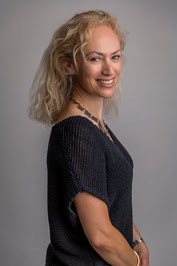 Louise Fein was born and brought up in London. She harboured a secret love of writing from a young age, preferring to live in her imagination than the real world. After a law degree, Louise worked in Hong Kong and Australia, travelling for a while through Asia and North America before settling back to a working life in London. She finally gave in to the urge to write, taking an MA in creative writing, and embarking on her first novel, Daughter of the Reich (named People Like Us in the UK and Commonwealth edition). The novel was inspired by the experience of her father's family, who escaped from the Nazis and arrived in England as refugees in the 1930's. Louise lives in the beautiful English countryside with her husband, three children, small dog and the local wildlife who like to make an occasional appearance in the house
Louise Fein was born and brought up in London. She harboured a secret love of writing from a young age, preferring to live in her imagination than the real world. After a law degree, Louise worked in Hong Kong and Australia, travelling for a while through Asia and North America before settling back to a working life in London. She finally gave in to the urge to write, taking an MA in creative writing, and embarking on her first novel, Daughter of the Reich (named People Like Us in the UK and Commonwealth edition). The novel was inspired by the experience of her father's family, who escaped from the Nazis and arrived in England as refugees in the 1930's. Louise lives in the beautiful English countryside with her husband, three children, small dog and the local wildlife who like to make an occasional appearance in the houseConnect with Louise: Website • Blog • Twitter • Goodreads.
Published on May 06, 2020 20:00
May 5, 2020
Let’s have a sneak peek between the covers of The Road to Liberation: Trials and Triumphs of WWII (A Collection) #HistoricalFiction #WW2 #BlogTour @JJToner_ya @MarionKummerow @marosikok

Stolen ChildhoodBy Marion Kummerow’s

Let’s have a sneak peek between the covers of The Road to Liberation. Below is an excerpt of Marion Kummerow’s fabulous book — Stolen Childhood
Excerpt
“Watch me and learn,” Laszlo whispered to Mindel, as they were hiding outside the back door of the kitchen barracks.
“What are you going to do?” Mindel whispered back, goosebumps rising on her skin. She was scared someone might see them and Laszlo looked as if he were up to no good, but she wasn’t going to let him see her fear. The other children in the group had argued she was too little to hang out with them, but he’d stuck up for her.
She looked up at him with raw adulation. He seemed so grown-up and was so courageous, he was her champion and she’d do whatever he wanted. For the past days she’d followed him around, always eager to please him and make him proud of her. She’d prove the other children wrong and show them she wasn’t too little.
Laszlo peeked around the corner of the building and then pulled her over until she could see as well. “That bucket is my goal.”
Mindel looked at the woman in the kitchen who was pulling potatoes from a large gunny sack and peeling them into a bucket – the same bucket Laszlo had pointed to.
“Those are potato peels,” she whispered back.
“And they taste really good. I’m going to get us some.”
“But that’s stealing,” Mindel said, appalled at his heinous plan.
“So what?”
She stared at him, her mind wandering back to her parents’ farm. One time, her mother had made a birthday cake for Israel, but everyone had only been allowed a small slice before she’d covered it and put it away for the next day. Mindel and Aron had waited until her mother walked out to milk the cows, snuck into the kitchen pantry and each grabbed a huge slice into their hands.
Out of fear of being caught red-handed, they’d crouched in the pantry and stuffed the cake into their mouths as fast as they could. Once the deed was accomplished, they snuck out and into the garden, pretending nothing had happened.
But the moment her mother saw them, her lovely face turned red and she called them out on stealing the cake. Even today, Mindel had no idea how her mother had found out, since they’d been so careful.
It had been a horrible moment when her mother had taken Mindel’s sticky hands, turned them with the palm upward and hit her with a wooden spoon. Aron hadn’t fared much better either, and both had been sent to their bedroom without dinner that day.
Mindel had never again stolen even a morsel of food from the pantry.
“Please, don’t. You’ll get in trouble. They’ll beat you,” she pleaded with Laszlo.
“Only if I get caught. And I’d rather take a beating than starve to death.”
Mindel heard his words and the truth behind them, but she wasn’t sure she agreed. In the camp people got beaten all the time for tiny misdeeds and it wasn’t with a wooden spoon, but with truncheons and whips. She’d even seen people fall down and never get up again after a beating. She didn’t want that to happen to Laszlo. He was her friend.
“See that little cubbyhole by the shelves?” Laszlo asked.
She craned her head until she saw it, and nodded.
“You’re fast and small, so you sneak inside and hide there. I’ll stand guard out here. Once the woman turns her back to you, grab as much from the bucket as you can and run back here to me. I’ll create a distraction if I need to.”
All the blood drained from her head and she suddenly felt dizzy. “You want me to steal the potato skins?”
“It’s called organizing food, not stealing. If you pass this test, I’ll make you a member of our gang.”
Mindel swallowed. She so badly wanted to be part of the gang. To belong to someone. And she was hungry. Very hungry. But stealing was wrong. Her mother would be so disappointed.
Laszlo saw her wavering and insisted, “I dare you. You can’t be with us if you’re a chickenshit.”
She hated this word. Aron had always name-called her this and worse when she hadn’t obeyed his stupid rules. She squared her shoulders and said, “I’ll do it, because I’m brave.”
Quivering with fear, she bit her lip, thinking of a way to get out of this dare. She repeated Laszlo’s words, telling herself it wasn’t really stealing – because the SS men were so mean and didn’t give them enough. But not even that helped to calm her nerves.
Laszlo nudged her forward. “Ready? Then go.”
Mindel nodded. Gathering up all her courage she crept forward, intent on pretending this was simply a game of hide and seek. Back on the farm she’d been a master, hiding in the smallest crevices without making a sound. Most of the time, her brothers would walk right by her, never knowing that she was merely inches away from them.
The Road to Liberation: Trials and Triumphs of WWIIA CollectionBy Marion Kummerow, Marina Osipova, Rachel Wesson, JJ Toner, Ellie Midwood, and Chrystyna Lucyk-Berger.
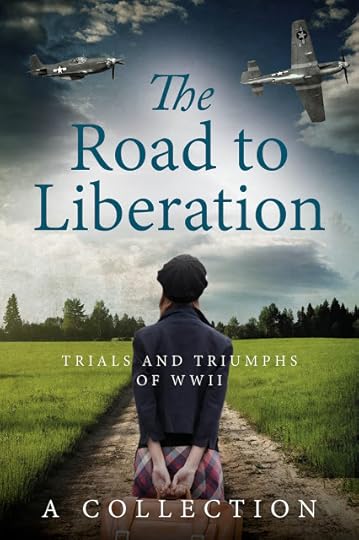
Riveting stories dedicated to celebrating the end of WWII.From USA Today, international bestselling and award-winning authors comes a collection filled with courage, betrayal, hardships and, ultimately, victory over some of the most oppressive rulers the world has ever encountered.By 1944, the Axis powers are fiercely holding on to their quickly shrinking territories.The stakes are high—on both sides:Liberators and oppressors face off in the final battles between good and evil. Only personal bravery and self-sacrifice will tip the scales when the world needs it most.Read about a small child finding unexpected friends amidst the cruelty of the concentration camps, an Auschwitz survivor working to capture a senior member of the SS, the revolt of a domestic servant hunted by the enemy, a young Jewish girl in a desperate plan to escape the Gestapo, the chaos that confused underground resistance fighters in the Soviet Union, and the difficult lives of a British family made up of displaced children..2020 marks 75 years since the world celebrated the end of WWII. These books will transport you across countries and continents during the final days, revealing the high price of freedom—and why it is still so necessary to “never forget”.
Stolen Childhood by Marion KummerowThe Aftermath by Ellie MidwoodWhen's Mummy coming? by Rachel WessonToo Many Wolves in the Local Woods by Marina OsipovaLiberation Berlin by JJ TonerMagda’s Mark by Chrystyna Lucyk-Berger
Pick up your copy ofThe Road to LiberationAmazon US • Amazon UK • Amazon CA
Marion Kummerow

Marion Kummerow was born and raised in Germany, before she set out to "discover the world" and lived in various countries. In 1999 she returned to Germany and settled down in Munich where she's now living with her family.
After dipping her toes with non-fiction books, she finally tackled the project dear to her heart. UNRELENTING is the story about her grandparents, who belonged to the German resistance and fought against the Nazi regime. It's a book about resilience, love and the courage to stand up and do the right thing.Marina Osipova

Marina Osipova was born in East Germany into a military family and grew up in Russia where she graduated from the Moscow State Institute of History and Archives. She also has a diploma as a German language translator from the Moscow State Institute of Foreign Languages. In Russia, she worked first in a scientific-technical institute as a translator then in a Government Ministry in the office of international relations, later for some Austrian firms. For seventeen years, she lived in the United States where she worked in a law firm. Eventually, she found her home in Austria. She is an award-winning author and a member of the Historical Novel Society.Rachel Wesson

Rachel Wesson is Irish born and bred. Drawn to reading from an early age, she started writing for publication a few years back. When she is not writing, Rachel likes to spend her time reading and playing with her three kids. Living in Dublin there are plenty of things to do, although the cowboys and Indians of her books rarely make an appearance. To chat with Rachel connect with her on Facebook - authorrachelwesson. To check out her newest releases sign up to her mailing list.
JJ Toner

My background is in Mathematics and computing, but I have been writing full time since 2005. I write short stories and novels. My novels include the bestselling WW2 spy story 'The Black Orchestra', and its three sequels, 'The Wings of the Eagle', 'A Postcard from Hamburg', and 'The Gingerbread Spy'.Many of my short stories have been published in mainstream magazines. Check out 'EGGS and Other Stories' - a collection of satirical SF stories. I was born in a cabbage patch in Ireland, and I still live here with my first wife, although a significant part of our extended family lives in Australia.
Ellie Midwood

Ellie Midwood is a USA Today bestselling and award-winning historical fiction author. She owes her interest in the history of the Second World War to her grandfather, Junior Sergeant in the 2nd Guards Tank Army of the First Belorussian Front, who began telling her about his experiences on the frontline when she was a young girl. Growing up, her interest in history only deepened and transformed from reading about the war to writing about it. After obtaining her BA in Linguistics, Ellie decided to make writing her full-time career and began working on her first full-length historical novel, "The Girl from Berlin." Ellie is continuously enriching her library with new research material and feeds her passion for WWII and Holocaust history by collecting rare memorabilia and documents.
In her free time, Ellie is a health-obsessed yoga enthusiast, neat freak, adventurer, Nazi Germany history expert, polyglot, philosopher, a proud Jew, and a doggie mama. Ellie lives in New York with her fiancé and their Chihuahua named Shark Bait.
Chrystyna Lucyk-Berger

Chrystyna Lucyk-Berger was born in Minnesota in 1969 and grew up in the culture-rich neighborhood of "Nordeast" Minneapolis. She started her writing career with short stories, travel narratives, worked as a journalist and then as a managing editor for a magazine publisher before jumping the editor's desk and pursuing her dreams of writing and traveling. In 2000, she moved to western Austria and established her own communications training company. In 2005, she self-published a historical narrative based on her relatives' personal histories and experiences in Ukraine during WWII. She has won several awards for her short stories and now primarily writes historical fiction. During a trip into northern Italy over the Reschen Pass, she stood on the edge of Reschen Lake and desperately wanted to understand how a 15th-century church tower ends up sticking out of the water. What stories were lying beneath? Some eight years later, she launched the "Reschen Valley" series with five books and a novella releasing between 2018 and 2021.For more on Chrystyna, dive in at inktreks(dot)com.
Published on May 05, 2020 21:30
Check out J.P. Reedman's fabulous #NewRelease — I, Richard Plantagenet, The Sequel Part 1: The Road From Fotheringhay #HistoricalFiction @StoneLord1
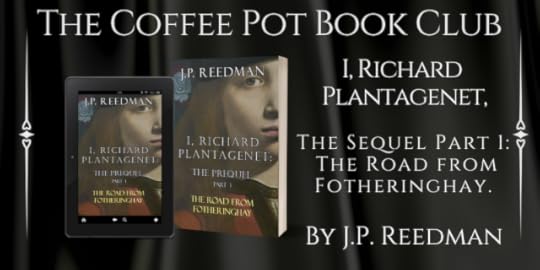
I, Richard Plantagenet,The Sequel Part 1:The Road From FotheringhayJ.P. Reedman
The Wars of the Roses rage. In Fotheringhay Castle, young Richard of the House of York, youngest son of Richard Duke of York and his wife Cecily Neville, has his first bereavement—the death of his baby sister, Ursula.
This loss is only the first of many in the life of a child caught up in that most bitter conflict of cousins, the Wars of the Roses.
At seven, Richard is at Ludlow castle with his parents and older siblings; hostilities suddenly flare and his father and eldest brothers are forced to flee, leaving Richard, his brother George and sister Margaret to face the Lancastrian army alongside their mother. The little family is taken captive by the Duke of Buckingham and held at one of his properties. Luckily, he is married to Cecily’s sister Anne, so their confinement is a relatively easy one, although subject to ‘stern rebuke.’ Nonetheless, prisoners they are. However, soon the Duke of Buckingham is slain in battle—fighting against Richard’s eldest brother, Edward, a handsome giant of 6ft 4, in what is his first major battle.
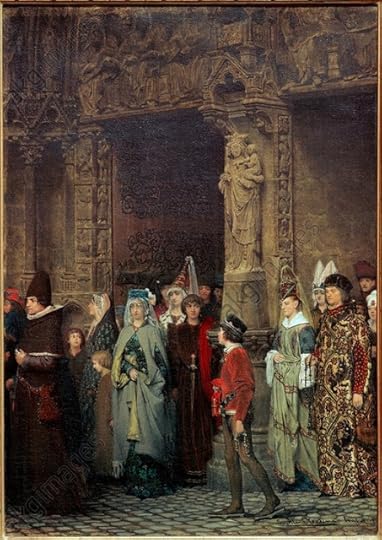
For a while the York family is safe in London and the Duke returns from abroad—now intent on claiming the throne. But the Queen, Margaret of Anjou, is determined that he will never supplant her young son and when Duke Richard heads north, hearing of unrest, he is lured into battle before the walls of Sandal castle and slain while his second son, Edmund, is murdered, age just seventeen.
Fearful for her youngest boys but cool-headed even in her grief, Cecily Neville sends them out of the country to Burgundy. Duke Phillip has agreed to their presence but is not overly enamoured of such controversial guests for he does not wish to seem partisan. So Richard and George are confined to a remote castle partly under construction.
But then welcome news arrives— two great battles have been fought at Mortimer’s Cross and Towton, and their brother Edward, taking revenge for the deaths of their father and brother Edmund, has claimed the throne. The boys return to England as King’s brothers—and soon both are made Royal Dukes.
The Wheel of Fortune has turned again for Richard as he is sent away for knightly training at Middleham, one of the castles of Edward’s strongest supporter, Richard Neville, Earl of Warwick. There he meets friends who will become lifelong supporters—young Francis Lovell and Robert Percy. Yet when King Edward and Warwick fall out over the King’s secret bride, the commoner Elizabeth Woodville, unrest creeps into his life yet again….
The childhood of the boy who will grow to be King Richard III, told from his first-person perspective.
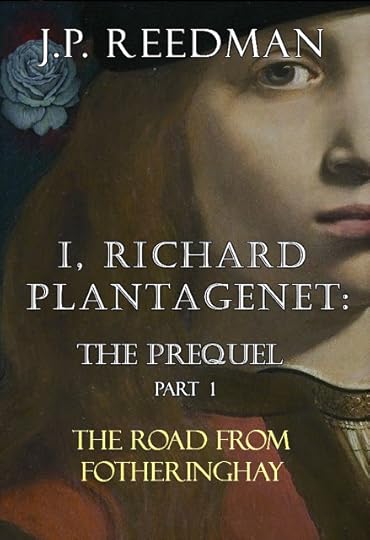
Prequel to the I, Richard Plantagenet series.Kindle version 0.99 time-limited introductory offer!THE ROAD FROM FOTHERINGHAY:Amazon
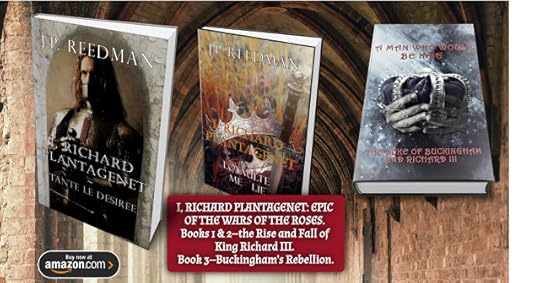
THE I, RICHARD PLANTAGENET SERIES:Amazon
J.P. Reedman
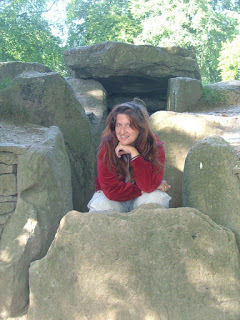 Born on the West Coast of Canada, J.P. Reedman now lives in the shadow of Stonehenge. A writer since the age of 5, when she wrote her first story about Cleopatra, she now write historical fiction and historical fantasy, with a little bit of general fantasy thrown into the mix. Favourite periods are medieval England, particularly the Wars of the Roses era, and prehistoric Britain. J.P. also writes about figures associated with her hometown of Amesbury, such as Queen Eleanor of Provence, Eleanor of Brittany and the naughty nun Mary of Woodstock, all of whom were buried in Amesbury (and are now lost!) J.P’s I, Richard Plantagenet series about Richard III has been called ‘a new Ricardian classic’, and in the future there will be an offshoot series about various members of the House of York.
Born on the West Coast of Canada, J.P. Reedman now lives in the shadow of Stonehenge. A writer since the age of 5, when she wrote her first story about Cleopatra, she now write historical fiction and historical fantasy, with a little bit of general fantasy thrown into the mix. Favourite periods are medieval England, particularly the Wars of the Roses era, and prehistoric Britain. J.P. also writes about figures associated with her hometown of Amesbury, such as Queen Eleanor of Provence, Eleanor of Brittany and the naughty nun Mary of Woodstock, all of whom were buried in Amesbury (and are now lost!) J.P’s I, Richard Plantagenet series about Richard III has been called ‘a new Ricardian classic’, and in the future there will be an offshoot series about various members of the House of York.
Published on May 05, 2020 21:00
#HistoricalFiction author, Mary Ann Bernal, is talking about the inspiration behind her fabulous new book— Crusader’s Path #HistoricalRomance @BritonandDane
<!-- /* Font Definitions */ @font-face {font-family:"Cambria Math"; panose-1:2 4 5 3 5 4 6 3 2 4; mso-font-charset:0; mso-generic-font-family:roman; mso-font-pitch:variable; mso-font-signature:-536870145 1107305727 0 0 415 0;} @font-face {font-family:Calibri; panose-1:2 15 5 2 2 2 4 3 2 4; mso-font-charset:0; mso-generic-font-family:swiss; mso-font-pitch:variable; mso-font-signature:-536858881 -1073732485 9 0 511 0;} /* Style Definitions */ p.MsoNormal, li.MsoNormal, div.MsoNormal {mso-style-unhide:no; mso-style-qformat:yes; mso-style-parent:""; margin:0cm; margin-bottom:.0001pt; mso-pagination:widow-orphan; mso-hyphenate:none; font-size:12.0pt; mso-bidi-font-size:11.0pt; font-family:"Times New Roman",serif; mso-fareast-font-family:Calibri; mso-fareast-theme-font:minor-latin; mso-bidi-font-family:"Times New Roman"; mso-bidi-theme-font:minor-bidi; mso-ansi-language:EN-US; mso-fareast-language:EN-US;} .MsoChpDefault {mso-style-type:export-only; mso-default-props:yes; font-size:11.0pt; mso-ansi-font-size:11.0pt; mso-bidi-font-size:11.0pt; font-family:"Calibri",sans-serif; mso-ascii-font-family:Calibri; mso-ascii-theme-font:minor-latin; mso-fareast-font-family:Calibri; mso-fareast-theme-font:minor-latin; mso-hansi-font-family:Calibri; mso-hansi-theme-font:minor-latin; mso-bidi-font-family:"Times New Roman"; mso-bidi-theme-font:minor-bidi; mso-ansi-language:EN-US; mso-fareast-language:EN-US;} .MsoPapDefault {mso-style-type:export-only; margin-bottom:8.0pt; line-height:107%;} @page WordSection1 {size:612.0pt 792.0pt; margin:72.0pt 72.0pt 72.0pt 72.0pt; mso-header-margin:36.0pt; mso-footer-margin:36.0pt; mso-paper-source:0;} div.WordSection1 {page:WordSection1;} </style> -->
Published on May 05, 2020 20:00
May 4, 2020
Blog Tour — The Road to Liberation: Trials and Triumphs of WWII , A Collection by Marion Kummerow, Marina Osipova, Rachel Wesson, JJ Toner, Ellie Midwood, and Chrystyna Lucyk-Berger.
The Coffee Pot Book Club Is Proud To Present…
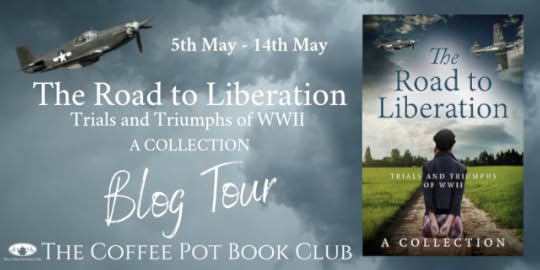
The Road to Liberation: Trials and Triumphs of WWIIA CollectionBy Marion Kummerow, Marina Osipova, Rachel Wesson, JJ Toner, Ellie Midwood, and Chrystyna Lucyk-Berger.
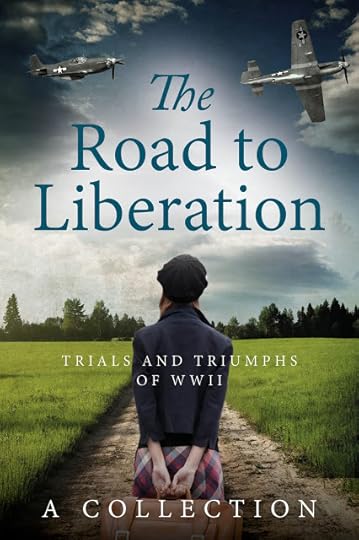
Riveting stories dedicated to celebrating the end of WWII.
From USA Today, international bestselling and award-winning authors comes a collection filled with courage, betrayal, hardships and, ultimately, victory over some of the most oppressive rulers the world has ever encountered.
By 1944, the Axis powers are fiercely holding on to their quickly shrinking territories.
The stakes are high—on both sides:
Liberators and oppressors face off in the final battles between good and evil. Only personal bravery and self-sacrifice will tip the scales when the world needs it most.
Read about a small child finding unexpected friends amidst the cruelty of the concentration camps, an Auschwitz survivor working to capture a senior member of the SS, the revolt of a domestic servant hunted by the enemy, a young Jewish girl in a desperate plan to escape the Gestapo, the chaos that confused underground resistance fighters in the Soviet Union, and the difficult lives of a British family made up of displaced children..
Stolen Childhood by Marion KummerowThe Aftermath by Ellie MidwoodWhen's Mummy coming? by Rachel WessonToo Many Wolves in the Local Woods by Marina OsipovaLiberation Berlin by JJ TonerMagda’s Mark by Chrystyna Lucyk-Berger
Pick up your copy of
The Road to Liberation: Trials and Triumphs of WWII
Amazon US • Amazon UK • Amazon CA
Marina Osipova

Marina Osipova was born in East Germany into a military family and grew up in Russia where she graduated from the Moscow State Institute of History and Archives. She also has a diploma as a German language translator from the Moscow State Institute of Foreign Languages. In Russia, she worked first in a scientific-technical institute as a translator then in a Government Ministry in the office of international relations, later for some Austrian firms. For seventeen years, she lived in the United States where she worked in a law firm. Eventually, she found her home in Austria. She is an award-winning author and a member of the Historical Novel Society.
Marion Kummerow

Marion Kummerow was born and raised in Germany, before she set out to "discover the world" and lived in various countries. In 1999 she returned to Germany and settled down in Munich where she's now living with her family.
After dipping her toes with non-fiction books, she finally tackled the project dear to her heart. UNRELENTING is the story about her grandparents, who belonged to the German resistance and fought against the Nazi regime. It's a book about resilience, love and the courage to stand up and do the right thing.
Rachel Wesson

Rachel Wesson is Irish born and bred. Drawn to reading from an early age, she started writing for publication a few years back. When she is not writing, Rachel likes to spend her time reading and playing with her three kids. Living in Dublin there are plenty of things to do, although the cowboys and Indians of her books rarely make an appearance. To chat with Rachel connect with her on Facebook - authorrachelwesson. To check out her newest releases sign up to her mailing list.
JJ Toner

My background is in Mathematics and computing, but I have been writing full time since 2005. I write short stories and novels. My novels include the bestselling WW2 spy story 'The Black Orchestra', and its three sequels, 'The Wings of the Eagle', 'A Postcard from Hamburg', and 'The Gingerbread Spy'.Many of my short stories have been published in mainstream magazines. Check out 'EGGS and Other Stories' - a collection of satirical SF stories. I was born in a cabbage patch in Ireland, and I still live here with my first wife, although a significant part of our extended family lives in Australia.
Ellie Midwood

Ellie Midwood is a USA Today bestselling and award-winning historical fiction author. She owes her interest in the history of the Second World War to her grandfather, Junior Sergeant in the 2nd Guards Tank Army of the First Belorussian Front, who began telling her about his experiences on the frontline when she was a young girl. Growing up, her interest in history only deepened and transformed from reading about the war to writing about it. After obtaining her BA in Linguistics, Ellie decided to make writing her full-time career and began working on her first full-length historical novel, "The Girl from Berlin." Ellie is continuously enriching her library with new research material and feeds her passion for WWII and Holocaust history by collecting rare memorabilia and documents.
In her free time, Ellie is a health-obsessed yoga enthusiast, neat freak, adventurer, Nazi Germany history expert, polyglot, philosopher, a proud Jew, and a doggie mama. Ellie lives in New York with her fiancé and their Chihuahua named Shark Bait.
Chrystyna Lucyk-Berger

Chrystyna Lucyk-Berger was born in Minnesota in 1969 and grew up in the culture-rich neighborhood of "Nordeast" Minneapolis. She started her writing career with short stories, travel narratives, worked as a journalist and then as a managing editor for a magazine publisher before jumping the editor's desk and pursuing her dreams of writing and traveling. In 2000, she moved to western Austria and established her own communications training company. In 2005, she self-published a historical narrative based on her relatives' personal histories and experiences in Ukraine during WWII. She has won several awards for her short stories and now primarily writes historical fiction. During a trip into northern Italy over the Reschen Pass, she stood on the edge of Reschen Lake and desperately wanted to understand how a 15th-century church tower ends up sticking out of the water. What stories were lying beneath? Some eight years later, she launched the "Reschen Valley" series with five books and a novella releasing between 2018 and 2021.For more on Chrystyna, dive in at inktreks(dot)com.
Published on May 04, 2020 21:00
The Coffee Pot Book Club
The Coffee Pot Book Club (formally Myths, Legends, Books, and Coffee Pots) was founded in 2015. Our goal was to create a platform that would help Historical Fiction, Historical Romance and Historical
The Coffee Pot Book Club (formally Myths, Legends, Books, and Coffee Pots) was founded in 2015. Our goal was to create a platform that would help Historical Fiction, Historical Romance and Historical Fantasy authors promote their books and find that sometimes elusive audience. The Coffee Pot Book Club soon became the place for readers to meet new authors (both traditionally published and independently) and discover their fabulous books.
...more
...more
- Mary Anne Yarde's profile
- 159 followers



